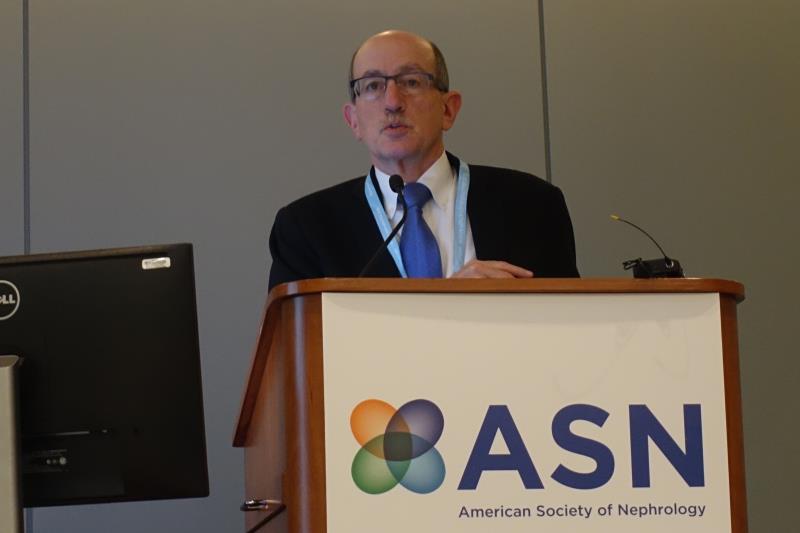 Dr Steven Fishbane from the Zucker School of Medicine at Hofstra/Northwell
Dr Steven Fishbane from the Zucker School of Medicine at Hofstra/NorthwellTreatment with sodium zirconium cyclosilicate (SZC) in end-stage renal disease (ESRD) patients undergoing haemodialysis (HD) improves potassium (K+) balance and lessens the frequency of severe hyperkalaemia episodes, according to a posthoc analysis of the phase IIIB DIALIZE study.
Presented at the American Society of Nephrology (ASN) Kidney Week 2019 by lead study investigator Dr Steven Fishbane from the Zucker School of Medicine at Hofstra/Northwell at Great Neck, New York, US, the results may have important implications, as persistent predialysis hyperkalaemia contributes to increased risk of cardiac arrhythmias and death. [Am J Cardiol 2012;109:1510-1513; Clin J Am Soc Nephrol 2016;11:90-100]
“SZC is a novel, orally administered, nonabsorbed, highly selective K+ binder that preferentially captures K+ throughout the entire gastrointestinal tract,” Fishbane said. “The phase IIIB DIALIZE trial [previously] showed that [the drug] reduces predialysis serum (s)K+ after the long interdialytic interval and is well tolerated in HD patients with hyperkalaemia.”
DIALIZE included 196 ESRD patients (mean age, 58.1 years) who underwent HD three times weekly and had predialysis hyperkalaemia. Of these, 99 patients received placebo and 97 received SZC 5 g once daily on nondialysis days as a starting dose. The trial comprised a 4-week SZC dose-titration phase (max, 15 g) to achieve target predialysis sK+ 4.0–5.0 mmol/L, as well as a 4-week stable-dose evaluation phase (SZC at 0, 5, 10 or 15 g).
In the posthoc analyses, Fishbane and colleagues recorded the number of visits during which patients had sK+ of 4–5 mmol/L and 3.5–5.5 mmol/L, along with the maximum sK+ during the evaluation phase. They also assessed the change in K+ gradient (difference between the predialysis sK+ and dialysate [d]K+) from baseline to end of evaluation phase by cross tabulation of categorized dK+: 2–3, 3–4, 4–5 and ≥5 mmol/L.
Significantly more patients in the SZC vs the placebo arm achieved an sK+ of 4.0–5.0 mmol/L and had their sK+ levels maintained within 3.5–5.5 mmol/L for 1, 2, 3 and 4 visits. During the evaluation period, there were fewer SZC-treated patients with severe predialysis hyperkalaemia (sK+ ≥6 mmol/L; 14 vs 56 patients). [ASN 2019, abstract SA-OR061]
Notably, treatment with SZC facilitated a shift in K+ gradient towards values below the reported higher risk threshold of 3 mmol/L. Specifically, 11 out of 36 patients (30.6 percent) moved from gradient 4–5 to 2–3 mmol/L, while 25 out of 45 (55.6 percent) moved from gradient 3–4 to 2–3 mmol/L. This effect could be attributed to SZC-induced reduction in sK+, as mean dK+ remained largely unchanged during the study, Fishbane pointed out.
“A high sK+ to dK+ gradient at the start of HD permits rapid lowering of sK+ but can also be associated with a greater risk of adverse events, such as cardiac arrhythmias and hospitalizations,” he continued.
That being said, “the correction and maintenance of sK+ in a safe range, as well as the reduction in dialysis K+ gradient observed with SZC in this study may allow higher dK+ concentration, lower the risk of cardiac arrhythmia, and allow easing of restrictions in quality of life, such as dietary restriction of potassium-containing foods,” the investigators explained in their paper. [J Am Soc Nephrol 2019;30:1723-1733]